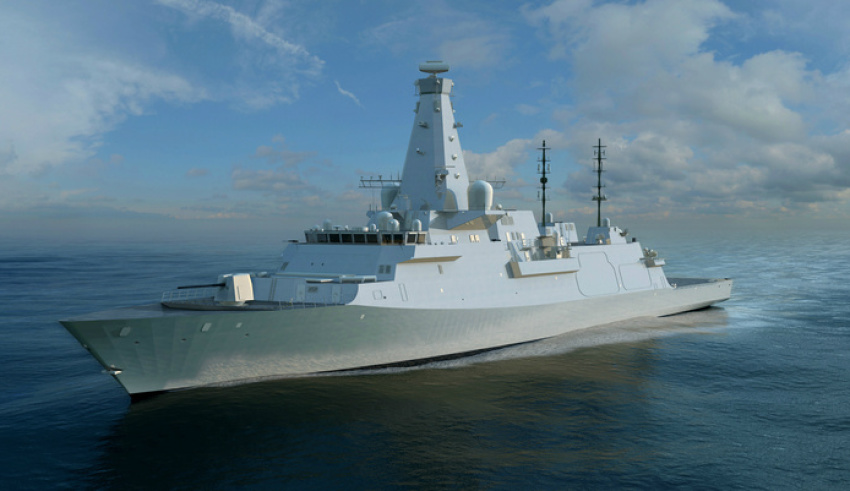The state-of-the-art anti-submarine warfare (ASW) features of BAE Systems’ Type 26 Global Combat Ship, dubbed the ‘paper ship’ by its competitors, far outweighs any risks associated with the fact it’s a new design that is yet to see service at sea, a BAE executive has argued.
To continue reading the rest of this article, please log in.
Create free account to get unlimited news articles and more!
Speaking on the Defence Connect podcast, BAE Systems' SEA 5000 managing director Nigel Stewart said any concerns supported by claims the Type 26 is not a proven design in service and sea proven fail to take into account the benefits of the modern design and technology aspects of frigate, as well as its design history from the proven Type 23 vessel.
"I look at it a completely different way; that we think that one of the great strengths of our ship is the fact [of] how modern it's going to be," Stewart explained.
"It's derived from the Type 23 ... So in terms of the how you operate an ASW ship, the basics of an ASW ship, we've got a fantastic pedigree there. We are de-risking a lot of the Type 26 equipment on the Type 23 in the UK, which gives us confidence."
The Type 26 vessel, one of the designs being considered by the Royal Australian Navy under the $35 billion SEA 5000 Future Frigate program, is currently in production for the UK's Royal Navy and is running five years ahead of the Australia SEA 5000 project.
If BAE Systems is selected for the SEA 5000 project, the first Australian vessel would be the fourth of class.
The first ship for the Royal Navy cut steel last year in Glasgow and is due to hit the water in 2020 while another two vessels will be in production, offering ample opportunity to de-risk the Australian project, Stewart said.
"The Australian program is running about five years behind the UK program," said Stewart. "So, full production starts in Australia in 2022. And we think that's … a perfect time scale really to make sure the de-risking happens in the UK program for the first class.
"But, we're still going to ensure we've got a really modern design, and a modern vessel to go forward in Australia. So, yes, we're looking at Australia, it should be the fourth class."
Should the vessel be selected by the government for the SEA 5000 project, Stewart said prototype testing will commence in 2020, followed by full production at Adelaide's Techport facilities in 2022.
So far, Tasmania's Liferaft Systems Australia and Victoria's Mackay Consolidated Industries have already won contracts on the UK Type 26 GCS program for the Royal Navy, as well as the Australian SEA 5000 project if BAE Systems is successful.
BAE Systems has also said it will establish a digital shipyard that will transform Australia's shipbuilding industry and facilitate a transfer of intellectual property and technical data, including the digital ship design optimised for the production of the GCS.
The innovative digital shipyard will bring the "ship to life" during its service life, with intelligent systems, both on board and linked to those ashore, that will monitor the performance of the ship and its systems. The digital shipyard will also include an inventory of parts, including cost and acoustic signature, suppliers and their details.
BAE Systems also recently unveiled its workforce mobilisation strategy for the SEA 5000 project, with a recruitment strategy that will include an Early Careers Program to create a pipeline of apprentices and graduates throughout the build phase of the $35 billion project.
The UK contender will commit to apprentices in steelwork, mechanical, electrical and technical trades, who will be central to the company’s strategy to ensure the right breadth and depth of skilled workers are brought into the multi-decade program. The company is anticipating that, at its peak, the Early Careers Program will have a population of around 150 apprentices, which will continue throughout the 35-year program.
A graduate program for business and engineering students will also offer opportunities for international placements across the company’s global business.
The Type 26 vessel is up against Fincantieri's FREMM vessel and Navantia's F-5000.
A decision on the $35 billion SEA 5000 project is expected no later than June this year. The winner will design, build and sustain nine vessels that will replace the Anzac Class frigates.

 Login
Login







